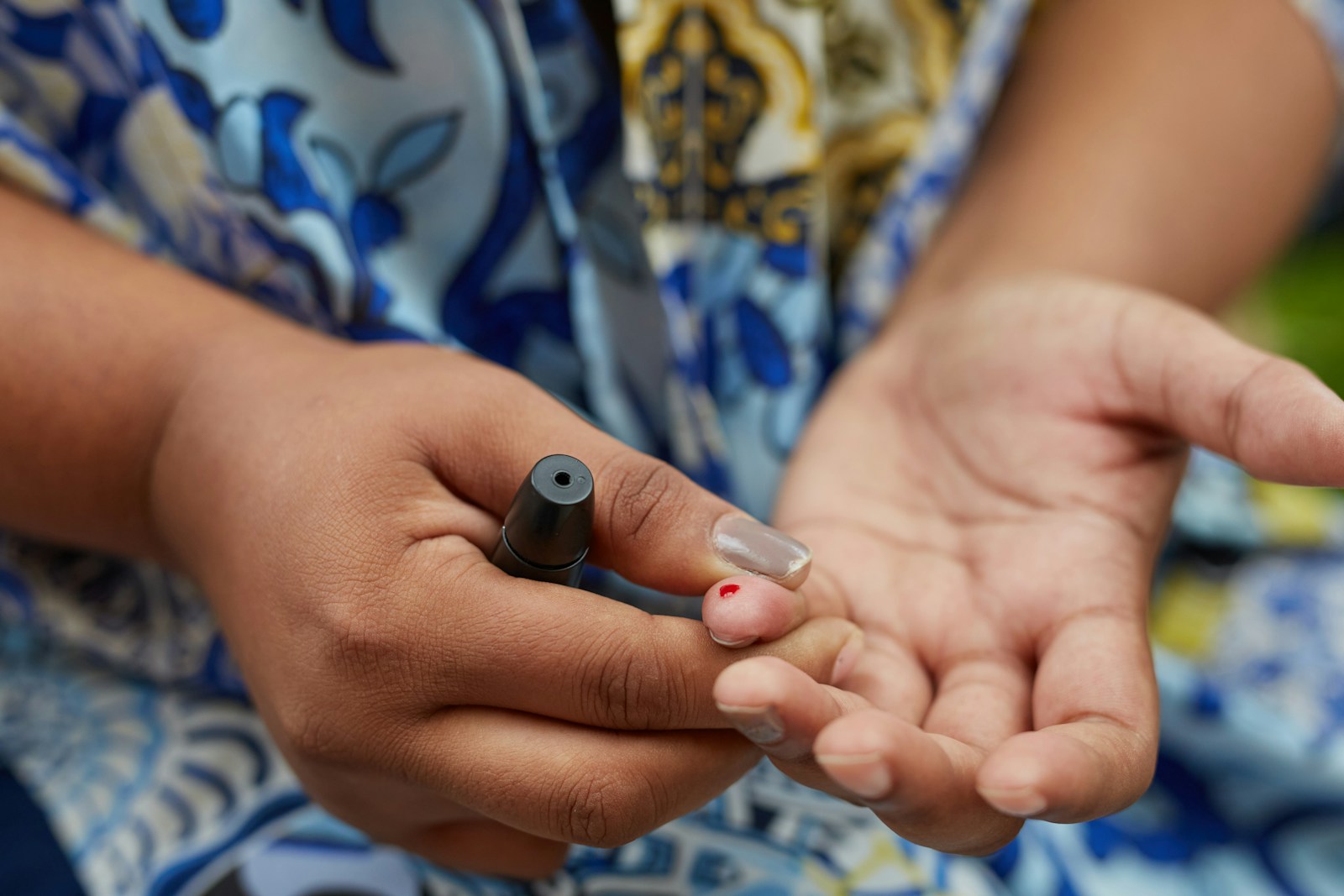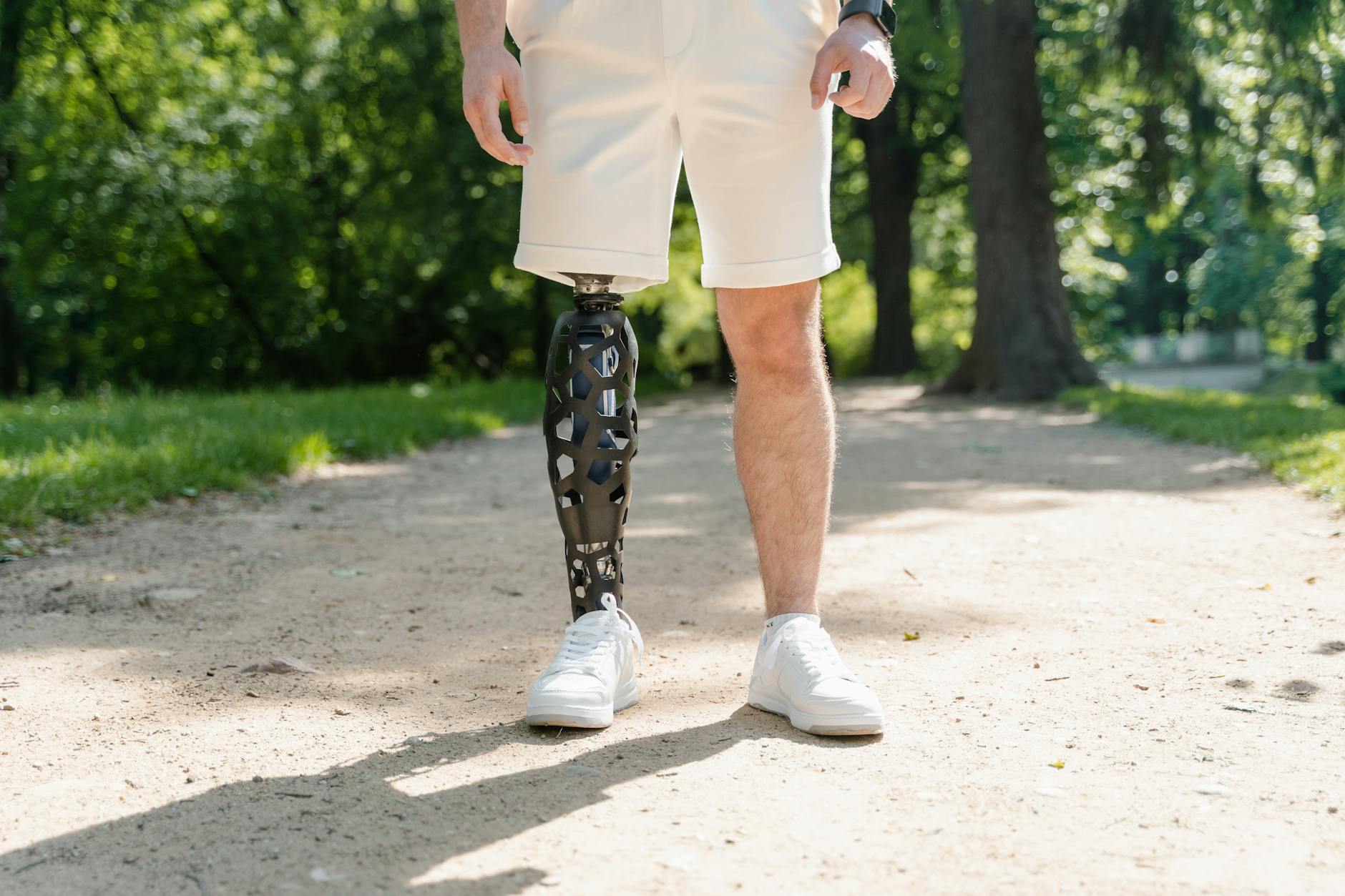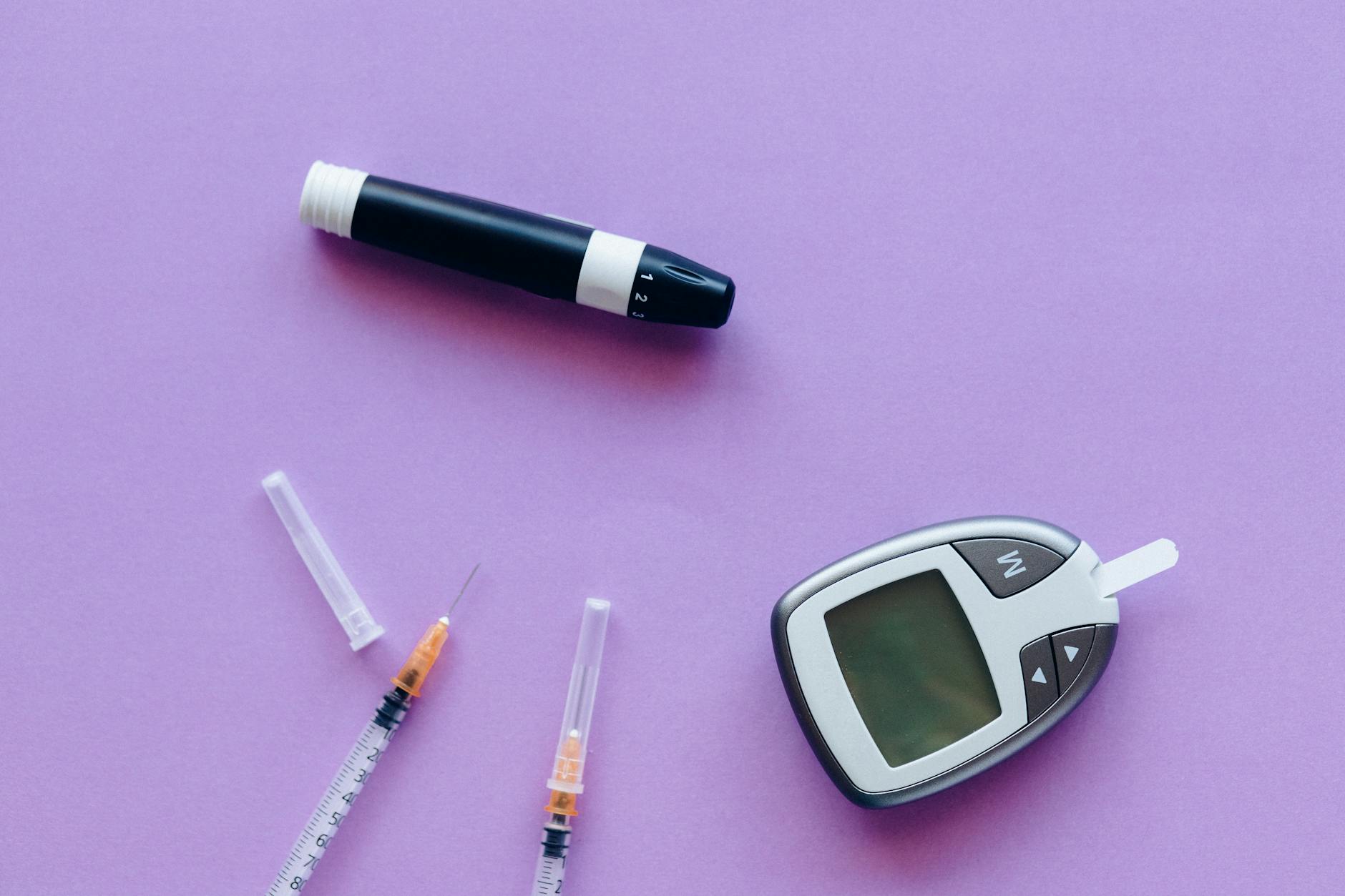
Diabetes doesn’t just affect blood sugar—it impacts nearly every system in the body. For those living with it, complications like reduced blood flow and nerve damage can lead to severe outcomes, including amputations. But why do so many diabetics die after such procedures? The answer lies in the cascade of health challenges that follow, from poor circulation to infections that spiral out of control. Without the right care, these factors make recovery extremely difficult, emphasizing the need for proper management and prevention.
Check out this related video for more insights into diabetic amputations.
Understanding Diabetes and Its Complications
Diabetes is more than just a blood sugar issue—it’s a chronic condition that can drastically affect the entire body. Over time, the condition leads to severe complications, many of which increase the risk of amputation and even death. To truly grasp why diabetics face higher mortalities after amputations, it’s critical to understand the underlying factors, including the vascular and nerve systems impacted by diabetes.
Types of Diabetes and Their Impact
There are two primary types of diabetes: Type 1 and Type 2. Both bring unique challenges but share the risk of severe complications when not managed effectively.
- Type 1 Diabetes: This autoimmune condition often appears in childhood or early adulthood. The body attacks insulin-producing cells in the pancreas, making insulin injections a core part of treatment. Poor insulin regulation can lead to issues like nerve damage (neuropathy) and kidney dysfunction.
- Type 2 Diabetes: More commonly diagnosed in adults but increasingly seen in children due to rising obesity rates, this type is characterized by insulin resistance. High blood sugar levels over time can harm the heart, blood vessels, and nerves. The complications of Type 2 diabetes, including peripheral neuropathy and cardiovascular disease, are directly linked to amputations.
Both types can cause far-reaching damage to blood vessels and nerves, increasing the likelihood of non-healing wounds or infections. Learn more about diabetes complications here.
Peripheral Vascular Disease (PVD) and Diabetes
One of the less-discussed but critical impacts of diabetes is Peripheral Vascular Disease (PVD). This condition arises when narrowed or blocked blood vessels in the limbs reduce circulation. Diabetics have a much higher risk of PVD compared to those without diabetes.
Why does this matter? Poor blood flow means that oxygen and nutrients struggle to reach the lower extremities. For diabetics, even a minor injury like a blister can turn into a severe infection. Left untreated, these infections can escalate to gangrene, necessitating amputation.
Worsening the issue, diabetics often experience a combination of PVD with peripheral neuropathy—numbness in the feet. This deadly mix makes injuries hard to detect, exacerbating the risk of severe infections. Understand how diabetes and PAD are linked.
Diabetic Foot Ulcers and Their Consequences
Diabetic foot ulcers are among the most common precursors to amputations. These open sores develop when high blood sugar damages blood vessels and nerves in the feet. Without proper sensation (due to neuropathy), small injuries go unnoticed. Combine this with poor circulation (from PVD), and these wounds struggle to heal.
Here’s why these ulcers are life-threatening:
- Chronic Infections: Bacteria thrive in the warm, moist environment of an untreated wound, leading to widespread infections.
- Sepsis Risk: Severe infections that aren’t contained can spread throughout the body, causing organ failure.
- High Amputation Rates: Studies show diabetic foot ulcers lead to 85% of non-traumatic lower limb amputations. Once amputated, survival rates drop significantly, often due to post-surgery complications like blood clots, additional infections, or other systemic conditions.
Proper prevention and early treatment are critical. Regular foot checks, appropriate footwear, and managing blood sugar help reduce risks. Learn how foot care can prevent amputations.

Photo by Nataliya Vaitkevich
Understanding these factors not only illuminates the challenges diabetics face but also highlights the importance of early intervention and comprehensive management to reduce risks of amputation and death.
Why Amputations are Common in Diabetics
Diabetes does more than just complicate blood sugar regulation—it has a devastating impact on circulation, immune response, and nerve function. This combination creates a perfect storm that increases the risk of amputations in many diabetic patients. Below, we explore two critical reasons why amputations occur: infections that spiral out of control and the delayed healing of wounds.
Infection and Gangrene
Infections in diabetic patients can escalate rapidly, often due to compromised blood flow and suppressed immune function. When the body’s defense system is weak and circulation is poor, even a minor injury can turn into a severe infection. One commonly overlooked consequence of such infections is gangrene.
Gangrene develops when tissues die due to a lack of blood supply. It’s particularly dangerous for diabetics because their reduced sensation (neuropathy) often makes injuries go unnoticed. A blister, cut, or ulcer can worsen quickly without proper care.
Factors increasing risks of infections in diabetics:
- Neuropathy: Reduces the ability to feel injuries.
- Peripheral Vascular Disease: Limits oxygen and nutrients delivered to wounded tissue.
- High Blood Sugar: Creates an environment where bacteria thrive.
If left unchecked, gangrene can necessitate amputation to stop the spread of the infection. For more insight, read about how diabetes and gangrene are connected.

Photo by Nataliya Vaitkevich
Delayed Wound Healing
One of the most troubling aspects of diabetes is how it affects the body’s ability to repair itself. High blood sugar slows the healing process by damaging blood vessels and nerves over time. This creates a vicious cycle where even small wounds take longer to recover, increasing the risk of infection and subsequent amputation.
How does high blood sugar delay wound healing?
- Impaired Circulation: High sugar levels damage the small blood vessels, reducing the oxygen supply.
- Inflammatory Response: Prolonged inflammation in diabetic wounds stalls the healing process.
- Neuropathy: Cuts or sores go unnoticed and untreated, becoming chronic wounds.
- Immune System Issues: Diabetes weakens the immune response, making infections harder to fight off.
Chronic wounds often progress into something far more dangerous. Without proper intervention, infected wounds can lead to severe complications, including systemic infections and the need for amputation. Learn more about why diabetic wounds heal so slowly here.
Understanding these contributing factors sheds light on why amputations are, unfortunately, all too common in diabetics. These cascading complications highlight the importance of vigilant care, early treatment, and effective blood sugar management.
Mortality Rates After Amputation in Diabetics
Amputations in diabetics are not just life-altering but often life-threatening. Research consistently shows that survival rates following a lower limb amputation in diabetics are alarmingly low. These outcomes highlight the severe risks associated with diabetes-related complications, particularly among those undergoing major surgeries like amputations.
Statistical Overview of Mortality Rates
Mortality statistics following amputations in diabetics paint a grim picture. Studies reveal that the 5-year mortality rate post-major lower limb amputation lies between 50% and 74%, with some patients not surviving beyond months post-surgery. For context:
- Approximately 11% of patients die within 30 days post-major amputation. (Source)
- Nearly 18% mortality is recorded just within 90 days.
- Long-term data shows up to 69% die within five years after undergoing such procedures. (Source)
These stark numbers highlight the systemic effects of diabetes that hinder recovery post-surgery.
For diabetics, even “minor” amputations aren’t as harmless as they sound. Research shows 1-year post-surgery mortality rates range between 20-50%, resembling survival rates for some cancers. (Source) Why such high rates? It’s not just one factor but a combination of complications, such as poor wound healing, recurring infections, and systemic health decline.
The Role of Comorbidities
The presence of comorbidities—additional health problems alongside diabetes—compounds the mortality risk after amputations. For many diabetics, the journey is already an uphill battle due to associated conditions like cardiovascular disease, kidney dysfunction, or obesity.
How do comorbidities worsen the situation?
- Heart Disease
Heart disease is prevalent in diabetics and worsens outcomes after any major surgery. Poor heart health stalls circulation, which is critical for healing after amputations. Studies show patients with coronary artery disease face significantly higher mortality rates, with complications like heart attacks being common in the months following surgery. (Learn more about diabetes and cardiovascular risks) - Kidney Disease
Diabetics often develop chronic kidney disease, another condition that exacerbates surgical risks. Lower filtration rates in kidneys mean the body struggles to manage infections, and weakened immune function creates an easy pathway for post-surgical sepsis. - Peripheral Artery Disease (PAD)
PAD is a frequent companion to diabetes and is marked by narrowed blood vessels, further limiting blood flow to limbs. Poor circulation both accelerates the need for amputation and increases post-surgical complications. (Explore the link between PAD and diabetes) - Obesity
Weight contributes to mechanical strain and is a notable risk factor for delayed recovery. It’s also tied to worsening wound infections in amputees, causing further health decline.
Managing comorbidities alongside diabetes is critical. Their interplay explains why diabetics die after amputations—it’s not just the physical loss of a limb; it’s the cascading effects of multiple systemic health issues.

Photo by MART PRODUCTION
Understanding the compounded risks illuminates the harsh realities many diabetics face when undergoing amputations. This, paired with the preventable nature of many diabetes-related complications, underscores the necessity for early intervention, better management, and more comprehensive care strategies.
Psychological Impact of Amputation on Diabetics
Amputation is a life-changing experience for anyone, but for diabetics, the complexities are magnified. Beyond physical challenges, the psychological toll can be profound. Facing the loss of a limb often triggers an emotional whirlwind that’s difficult to navigate, especially when paired with existing health burdens like diabetes.
Emotional and Psychological Effects
The emotional aftermath of amputation can be overwhelming. Diabetics already battle chronic illness, which carries its own mental health strain, and an amputation often amplifies these struggles.
Key challenges include:
- Anxiety: A constant worry about future health can settle in. For many, the fear of another amputation or prolonged recovery lingers daily.
- Depression: The loss of independence or change in body image can lead to feelings of worthlessness. Many diabetics report experiencing sadness that disrupts their quality of life. Learn about the mental health challenges associated with amputation.
- Grief over limb loss: Amputation isn’t just the loss of a body part—it’s often viewed as the loss of an identity. People may struggle to come to terms with this, much like mourning any significant loss.
- Social isolation: Amputation can lead to withdrawal from social circles. Diabetics may feel self-conscious or avoid gatherings due to mobility struggles or perceived judgment.
The emotional impact often intertwines with physical limitations, creating a cycle that’s hard to break without intervention.

Photo by Valentin Angel Fernandez
Coping Mechanisms and Support Systems
Recovery is more than just regaining physical mobility. Addressing the emotional and mental health side of amputation is critical for holistic healing. Thankfully, there are ways for those affected to cope and adapt to their new normal.
Effective coping strategies include:
- Therapy: Professional support through cognitive behavioral therapy (CBT) or mindfulness techniques can help amputees process their emotions. Explore psychological treatments for limb loss.
- Peer support groups: Connecting with others who have experienced similar challenges can ease the sense of isolation. This shared understanding often fosters hope and resilience. Organizations like the Amputee Coalition offer valuable resources.
- Adjusting to new routines: Small, manageable lifestyle changes like maintaining sleep schedules and proper nutrition can improve overall well-being.
- Assistive technology: Utilizing prosthetics or mobility aids helps regain independence, improving both functionality and self-confidence.
The role of a support system cannot be overstated:
- Family and friends: Having loved ones who listen and offer encouragement eases the emotional burden. Honest communication is key.
- Mental health professionals: Counselors and therapists trained in grief or trauma can provide tools to navigate feelings of loss effectively.
- Community resources: Local organizations or charities often provide supports, from peer mentorship to financial aid for prosthetics.
Amputation is one of the most profound challenges a diabetic may face, but with the right tools and connections, many individuals discover resilience and hope. Each step toward mental and emotional recovery matters, no matter how small. Read about emotional recovery for amputees here.
Preventive Measures and Alternatives
Prevention is the cornerstone of reducing the risk of amputation for individuals with diabetes. Taking proactive measures to control blood sugar, monitor foot health, and address potential complications early can dramatically shift outcomes. Here, we focus on the importance of managing blood glucose levels and regular foot care, two critical strategies that can prevent serious health consequences.
Importance of Blood Sugar Control
Maintaining healthy blood sugar levels is essential for diabetics, and it’s not just about avoiding highs and lows. Poor glucose control damages blood vessels and nerves over time, setting the stage for complications like infections, poor circulation, and delayed wound healing—all key players in the risk of amputation.
Why is blood sugar control so important? Think of it as maintaining the foundation of a house. If the base is unstable, everything else will eventually crumble. High blood sugar levels weaken your body’s natural defenses and slow tissue repair, making even minor injuries a gateway to larger issues.
Key strategies to manage blood sugar effectively:
- Monitor glucose levels consistently using a home glucose monitor or as recommended by your doctor.
- Follow a balanced diet rich in fiber, lean protein, and whole grains to maintain stable sugar levels throughout the day.
- Exercise regularly, as physical activity helps the body use insulin more efficiently.
- Stick to your medication plan without skipping doses—don’t underestimate the role of daily care.
Looking for additional insight on managing blood glucose effectively? Learn more here.

Photo by Nataliya Vaitkevich
By prioritizing blood sugar control, diabetics can significantly cut the risk of complications that lead to amputations.
Regular Foot Care and Monitoring
For diabetics, foot health isn’t just an afterthought—it has to be a daily priority. Diabetic neuropathy and reduced blood flow make the feet particularly vulnerable. Small cuts or blisters, which might seem trivial to others, can spiral into severe infections if ignored.
What steps should you take for proper foot care? Here’s a simple guide to help you stay ahead of potential issues:
- Check your feet daily for any sores, redness, or changes in skin texture. Use a mirror if needed.
- Wash your feet daily, but avoid hot water. Warm soapy water is best, followed by thorough drying, especially between the toes.
- Moisturize your feet, but not between the toes, to prevent fungal infections.
- Wear comfortable, well-fitted shoes and avoid walking barefoot, even at home.
- Trim toenails straight across to prevent ingrown nails, and file down sharp edges.
Don’t underestimate the value of regular foot care appointments with a podiatrist. A professional can help detect issues early, like calluses or ulcers, before they develop into something more severe. Discover more diabetic foot care tips.
Taking care of your feet isn’t just about avoiding pain—it’s about preserving mobility and quality of life. Catching issues early is like fixing a crack in the windshield before it spreads—a little effort upfront saves major trouble later.
Conclusion
Diabetic amputations carry significant risks, with survival rates alarmingly low due to systemic health challenges. Complications like infections, poor circulation, and underlying conditions such as cardiovascular disease or kidney dysfunction make recovery difficult.
Prevention must remain the priority. Managing blood sugar, maintaining proper foot care, and addressing health issues early are essential steps to reduce the risks.
Awareness can make a difference. Share this information, stay proactive about health, and encourage others to take diabetes management seriously. Together, these efforts can prevent tragic outcomes and improve quality of life.





